Brutalism

|
Contents |
[edit] What is brutalism?
Brutalism, also known as Brutalist architecture, is a style that emerged in the 1950s and grew out of the early-20th century modernist movement. Brutalist buildings are characterised by their massive, monolithic and ‘blocky’ appearance with a rigid geometric style and large-scale use of poured concrete. The movement began to decline in the 1970s, having been much criticised for being unwelcoming and inhuman.
[edit] What are the characteristics of brutalism?
Brutalism is generally associated with rough, unfinished surfaces, unusual shapes, heavy-looking materials, straight lines, and small windows. Modular elements are often used to form masses representing specific functional zones, grouped into a unified whole. As well as concrete, other materials commonly used in brutalist buildings included brick, glass, steel, and rough-hewn stone.
[edit] What is the history of brutalism
The term ‘Brutalism’ was first coined by the British architects Alison and Peter Smithson, and was then popularised by the architectural historian Reyner Banham in 1954. It is derived from ‘Béton brut’ (meaning raw concrete) and was first associated in architecture with Le Corbusier, who designed the Cite Radieuse in Marseilles in the late-1940s.
Brutalism became a popular style throughout the 1960s as the austerity of the 1950s gave way to dynamism and self-confidence. It was commonly used for government projects, universities, car parks, leisure centres, shopping centres, and high-rise blocks of flats.
Brutalism became synonymous with the socially progressive housing solutions that architects and town planners promoted as modern ‘streets in the sky’. With an ethos of ‘social utopianism’. Together with the influence of constructivist architecture, it became increasingly widespread across European communist countries such as the Soviet Union, Bulgaria, Yugoslavia, and Czechoslovakia.
As high-rise buildings became associated with crime, social deprivation and urban decay, so Brutalism was increasingly reviled, and across the UK, many Brutalist buildings were demolished. Typical of this adverse reaction was the demolition in 2019 of the multi-storey car park in Welbeck Street, London W1. However, Brutalism has continued to influence later forms, associated with high-tech architecture and de constructivism. In recent years, it has been critically reappraised, with certain buildings being seen as architectural landmarks.
In 2006, three architects from Boston, Massachusetts initiated a rebranding campaign to relabel Brutalism as Heroic architecture. The effort attempts to remove the negativity of the original term while preserving its reference to its scale and substance.
[edit] Examples of brutalist architecture
7 examples of brutalist architecture are shown below.
Park Hill, Sheffield
Preston Bus Station, Preston
Welbeck Street car park (demolished 2019)
[edit] International styles of brutalism
3 examples of international styles of brutalism are:
Some other great resources to find out more about Brutalism are:
[edit] Related articles on Designing Buildings
- Architectural styles.
- Bauhaus.
- Boom Cities: architect-planners and the politics of urban renewal in 1960s Britain.
- British post-war mass housing.
- Brutalist London Map - review.
- Chinese brutalism.
- Cite Radieuse.
- Concrete.
- Constructivist architecture.
- Deconstructivism.
- Erno Goldfinger.
- Heroic architecture.
- High-tech architecture.
- Howell Killick Partridge and Amis.
- Italian brutalism.
- Megastructure.
- Owen Hatherley - Landscapes of Communism.
- Sink estate regeneration plans.
- SOS Brutalism: a global survey.
- Space, Hope and Brutalism.
- Spanish brutalism.
- Spomeniks.
- Trellick Tower.
- Whittington Estate.
[edit] External resources
- Dezeen - Guide to Brutalist architecture.
Featured articles and news
Homes England creates largest housing-led site in the North
Successful, 34 hectare land acquisition with the residential allocation now completed.
Scottish apprenticeship training proposals
General support although better accountability and transparency is sought.
The history of building regulations
A story of belated action in response to crisis.
Moisture, fire safety and emerging trends in living walls
How wet is your wall?
Current policy explained and newly published consultation by the UK and Welsh Governments.
British architecture 1919–39. Book review.
Conservation of listed prefabs in Moseley.
Energy industry calls for urgent reform.
Heritage staff wellbeing at work survey.
A five minute introduction.
50th Golden anniversary ECA Edmundson apprentice award
Showcasing the very best electrotechnical and engineering services for half a century.
Welsh government consults on HRBs and reg changes
Seeking feedback on a new regulatory regime and a broad range of issues.
CIOB Client Guide (2nd edition) March 2025
Free download covering statutory dutyholder roles under the Building Safety Act and much more.
Minister quizzed, as responsibility transfers to MHCLG and BSR publishes new building control guidance.
UK environmental regulations reform 2025
Amid wider new approaches to ensure regulators and regulation support growth.
BSRIA Statutory Compliance Inspection Checklist
BG80/2025 now significantly updated to include requirements related to important changes in legislation.







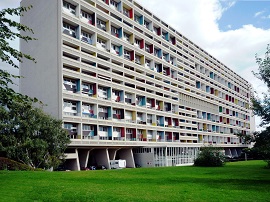
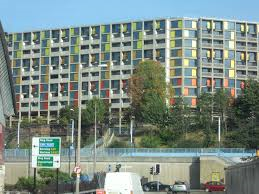

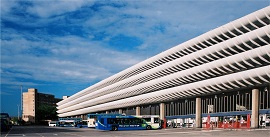
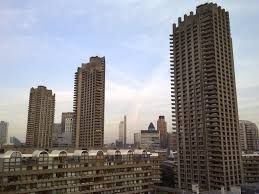

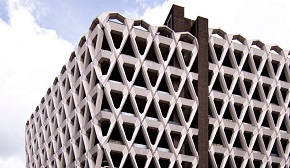
















Comments
To make a comment about this article, click 'Add a comment' above.
Separate your comments from any existing comments by inserting a horizontal line.
Hacettepe University should be on the list.
Never really liked brutalism - the clue is in the title.